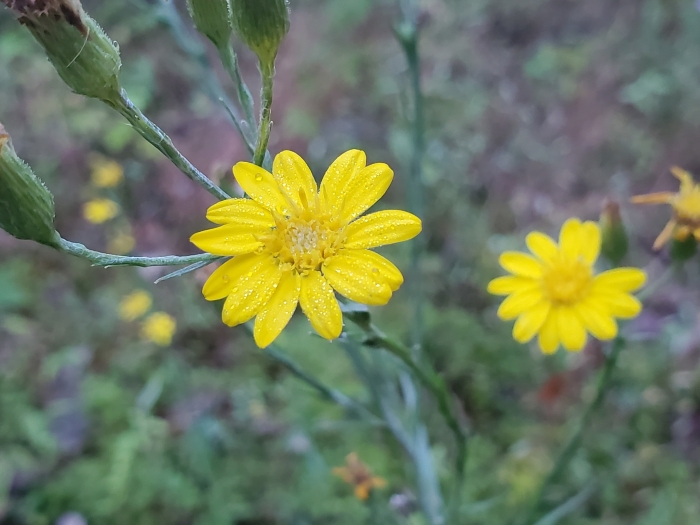Narrowleaf Silkgrass
(Pityopsis graminifolia)
Narrowleaf Silkgrass (Pityopsis graminifolia)
/
/

Samuel A. Schmid
CC BY 4.0
Image By:
Samuel A. Schmid
Recorded By:
Copyright:
CC BY 4.0
Copyright Notice:
Photo by: Samuel A. Schmid | License Type: CC BY 4.0 | License URL: http://creativecommons.org/licenses/by/4.0/ | Rights Holder: Samuel A. Schmid | Publisher: iNaturalist | Date Created: 2021-10-18T08:01:57-07:00 |



















































Estimated Native Range
Summary
Pityopsis graminifolia, commonly known as Narrowleaf Silkgrass, is an evergreen perennial herb, inaccurately named as it is not a grass but rather a member of the Asteraceae family. It is native to open pine woodlands, coastal plains, and sandhills in the Southeastern USA to Mexico and Central America. This species typically grows up to 80 centimeters tall with green or brown stems covered in distinctive silvery hairs, giving it a unique texture in the landscape. The leaves are grasslike, linear to lance-shaped, and also have silvery hairs. From late summer to fall, it produces showy yellow flowers with both ray and disc florets, attracting pollinators. The inflorescence can vary from a few to over a hundred flower heads, contributing to its ornamental value.
Narrowleaf Silkgrass is valued for its drought tolerance, making it suitable for xeriscaping. It is often used in ornamental plantings, for vegetating roadsides, and in other disturbed habitats where it can help control erosion. It is also beneficial for its ability to form large colonies through rhizome spread, providing ground cover and habitat for wildlife. In cultivation, it thrives in part shade to full sun, with medium amounts of water, and prefers well-drained soils. While it is not typically associated with major diseases, it can spread aggressively in optimal conditions, which should be considered when planting in small gardens or near natural areas.CC BY-SA 4.0
Narrowleaf Silkgrass is valued for its drought tolerance, making it suitable for xeriscaping. It is often used in ornamental plantings, for vegetating roadsides, and in other disturbed habitats where it can help control erosion. It is also beneficial for its ability to form large colonies through rhizome spread, providing ground cover and habitat for wildlife. In cultivation, it thrives in part shade to full sun, with medium amounts of water, and prefers well-drained soils. While it is not typically associated with major diseases, it can spread aggressively in optimal conditions, which should be considered when planting in small gardens or near natural areas.CC BY-SA 4.0
Plant Description
- Plant Type: Herb
- Height: 2-3 feet
- Width: 1-5 feet
- Growth Rate: Slow, Moderate
- Flower Color: Yellow
- Flowering Season: Spring
- Leaf Retention: Evergreen
Growth Requirements
- Sun: Part Shade
- Water: Medium
- Drainage: Medium, Slow
Common Uses
Bee Garden, Border Plant, Butterfly Garden, Fire Resistant, Groundcover, Potted Plant, Salt Tolerant, Showy Flowers
Natural Habitat
native to open pine woodlands, coastal plains, and sandhills in the Southeastern USA to Mexico and Central America
Other Names
Common Names: Grass-Leaf Golden-Aster, Silk-Grass, Grass-Leaved Goldenaster
Scientific Names: , Pityopsis graminifolia, Chrysopsis graminifolia, Heterotheca graminifolia, Chrysopsis graminifolia var. graminifolia, Heterotheca nervosa, Chrysopsis nervosa, Chrysopsis argentea, Heterotheca correllii, Pityopsis nervosa
GBIF Accepted Name: Pityopsis graminifolia (Michx.) Nutt.